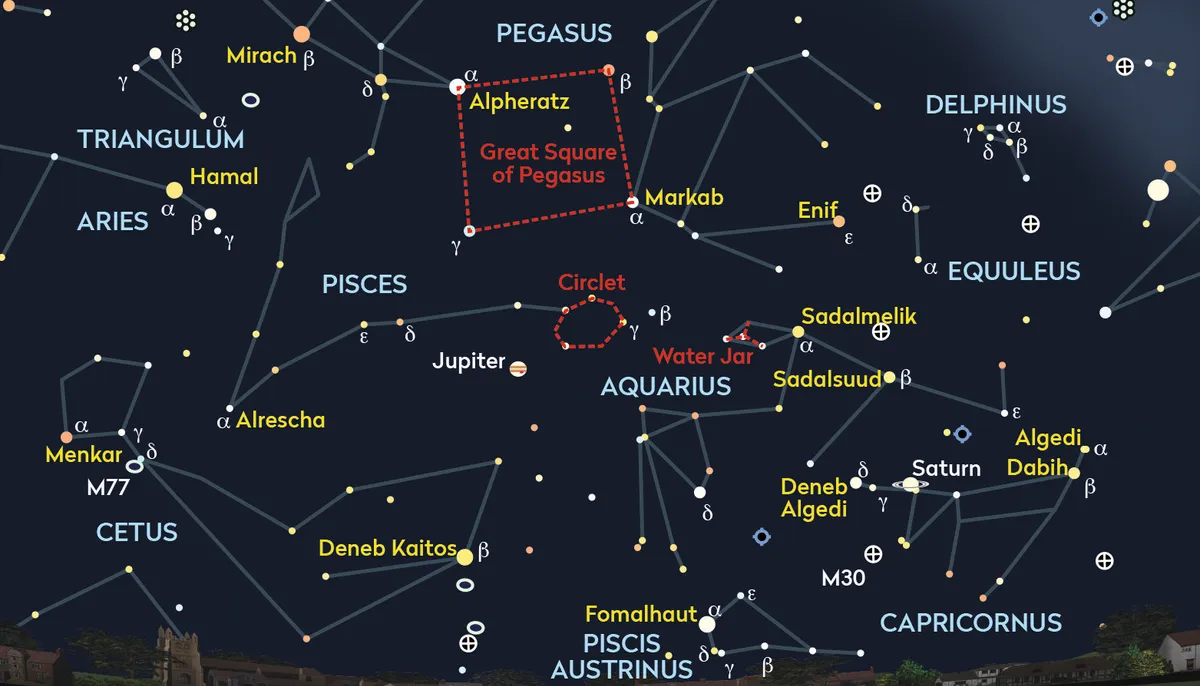Mira is a red giant star located in the neck of Cetus that varies in brightness, pulsating on a 332-day cycle.
When dimmest, a telescope is required to see it, but when brightest, it makes a noticeable contribution to its constellation.
Cetus is also home to triple star Kaffaljidhma (Gamma Ceti).

Although its period is predictably regular, its brightness range isn’t.
When dimmest, Mira may appear anywhere between mag. +8.1 and +10.1. The maxima can vary too, ranging from mag. +4.9 to +2.0.

Discovery
Following a spectacular supernova spotted in Cassiopeia by Tycho Brahe in 1572, German astronomer David Fabricius declared he had found a new star in Cetus during August 1596.
Fabricius’s new star was much dimmer and unlike the supernova, returned to view after fading.
Years later, Johannes Holwarda determined the star’s 11-month period, subsequently becoming known as the discoverer of Mira’s true variability.
Johannes Hevelius named the star Mira in 1662. It means ‘wonderful’ or ‘amazing’.
Mira was one of the first regular variable stars identified and now lends its name to a whole class of them: the Mira-type variables.

Mira facts
Mira lies at a distance of 300 lightyears and is catalogued as Omicron (ο) Ceti.
It's comprised of a red giant primary with a white dwarf companion orbiting at a close 70 AU.
NASA’s Chandra X-ray Observatory has seen matter being transferred from the red giant to the secondary.

If the white dwarf re-ignites due to this transfer, it could cause a Type Ia supernova, the same type as that spotted by Tycho Brahe in 1572.
Ultraviolet observations, meanwhile, have revealed a 13-lightyear tail spreading behind the star – believed to be caused by stellar wind interacting with the interstellar medium.
If you've observed or imaged star Mira, let us know by emailing contactus@skyatnightmagazine.com.
This article first appeared in the January 2018 issue of BBC Sky at Night Magazine.

